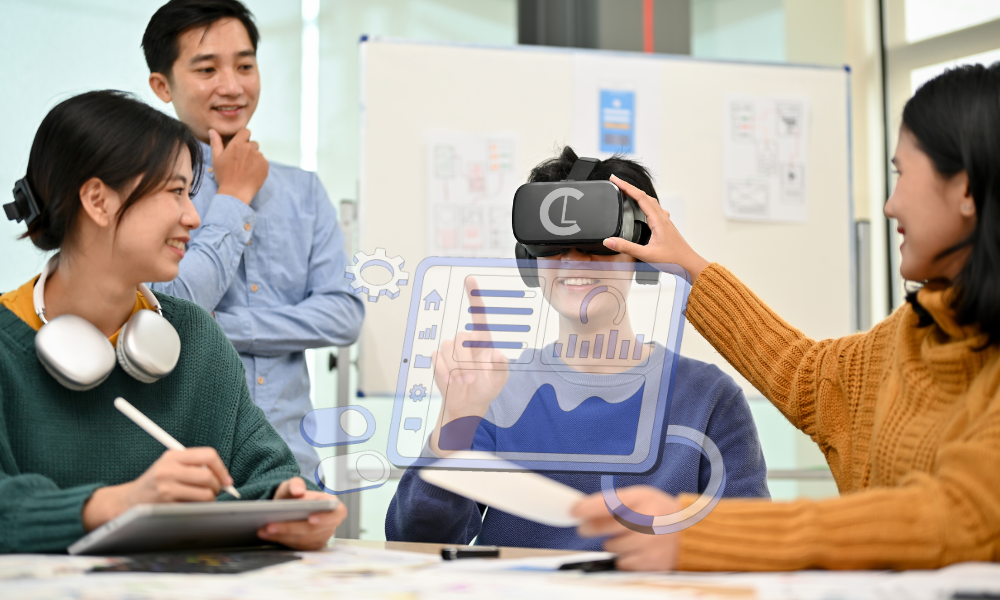The Transformative Power of Generative AI
The AMTA 2023 event, held on November 8, 2023, served as a beacon for professionals and enthusiasts in machine translation (MT). The event, organized virtually, brought together a diverse group of experts who shared their insights and research findings, focusing on the intersection of generative AI and machine translation. This article synthesizes the key takeaways and the valuable insights shared by Jill Huang, our Customer Success Director at Clearly Local, from the event’s presentations, offering a glimpse into the future of machine translation and its evolving landscape.
Keynote: MT in the Age of LLMs
Christian Federmann’s keynote provided a comprehensive overview of the evolution of machine translation technologies. He traced the journey from rule-based and statistical methods to the latest neural machine translation and large language models like GPT-4. Federmann emphasized the rapid development of GPT-4, noting its unprecedented rollout speed compared to previous technologies.

The keynote intriguingly addressed the industry’s reaction to GPT through the ‘Five Stages of Grief’ lens, reflecting a journey from denial and skepticism to acceptance and willingness to adapt. Federmann concluded with an optimistic vision of the future, advocating for a collaborative model where humans and AI work in tandem, leveraging the strengths of each to enhance translation quality.
The Limits of Language AI
Kirti Vashee’s talk highlighted the limitations and challenges of generative AI (GenAI) in language translation. He raised crucial questions about the potential of LLMs to replace NMT and address the complexities of human language. Vashee pointed out significant issues like trustworthiness, adaptation costs, data security, and the inherent challenges in modeling human language.
A key observation was the English dominance in model performance, which raises concerns about language inclusivity. Vashee noted that while LLMs like GPT-4 offer promising capabilities, their latency and higher operational costs than traditional MT models pose challenges for widespread production use.
Lost in GenAI, Found in MT
Konstantin Savenkov’s presentation focused on a study evaluating GenAI models’ translation capabilities across different languages. The study explored whether GenAI models are equally effective in English and other languages and whether the language of prompts affects performance.
The research involved testing various LLMs across languages like Spanish, French, Chinese Simplified, and Ukrainian. While some models performed well without switching to English, others significantly improved when translations were routed through English. This finding highlights the current English-centric nature of LLMs and the challenges in ensuring equal performance across diverse languages.
“Self-driving” Generative AI
Adam Bittlingmayer’s session drew an analogy between self-driving technology and AI in language generation. He argued that as self-driving cars have limitations and require human intervention, AI in language generation should adopt a hybrid approach.
Bittlingmayer stressed the importance of recognizing AI’s limitations in language tasks, suggesting a system where AI knows when to yield to human expertise. He highlighted hybrid systems like translation memory and machine translation quality prediction as examples of how AI and human efforts can be effectively combined.

Fine-Tuning LLMs for Human Intervention
Serge Gladkoff discussed the use of fine-tuned LLMs to predict the need for human intervention in machine translation. The presentation centered around a study that used historical post-editing data to train LLMs to identify segments that may not require editing.
Gladkoff’s research presented a practical application of LLMs, demonstrating their capability to learn from past data and make accurate predictions. This approach suggests a more efficient translation process, where human efforts are focused on segments where their expertise is most needed.
Conclusion: Towards a Synergistic Future
The AMTA 2023 event, as experienced and relayed by Jill Huang, was a testament to the dynamic and evolving field of machine translation. The discussions underscored the promise of integrating LLMs with MT while acknowledging the challenges ahead. As the field continues to navigate these uncharted waters, the insights shared by these thought leaders will undoubtedly guide future developments in machine translation and language AI.
Clearly Local stands at the forefront in this ever-changing landscape, leveraging these advancements to enhance our translation and localization services. Our commitment to incorporating the latest in language AI and MT aligns perfectly with the trends and insights presented at AMTA 2023. We are dedicated to keeping pace with these technological shifts and leading the way in delivering precise, culturally relevant translations that resonate with global audiences.
At Clearly Local, we understand that the power of language lies not just in words but in the ability to adapt and connect across cultures. Our team of experts, armed with cutting-edge tools and a deep understanding of linguistic nuances, ensures that every translation goes beyond mere words to capture the essence of the original content. We are excited to be part of this revolutionary journey in machine translation and are committed to providing our clients with solutions that are not just translations but bridges to the world.



